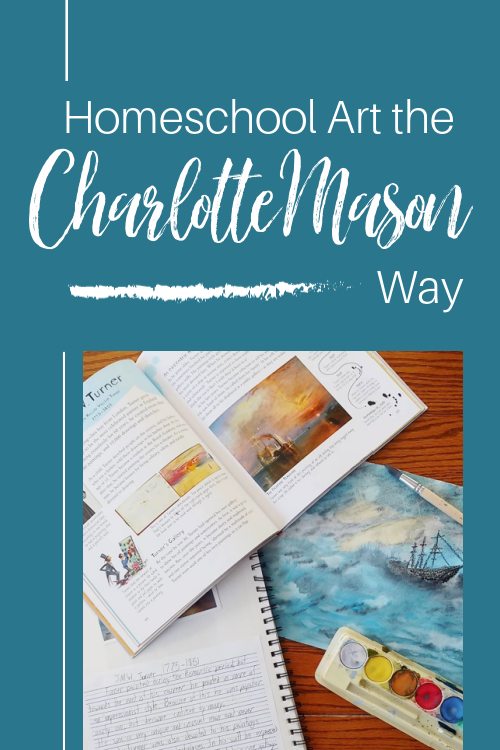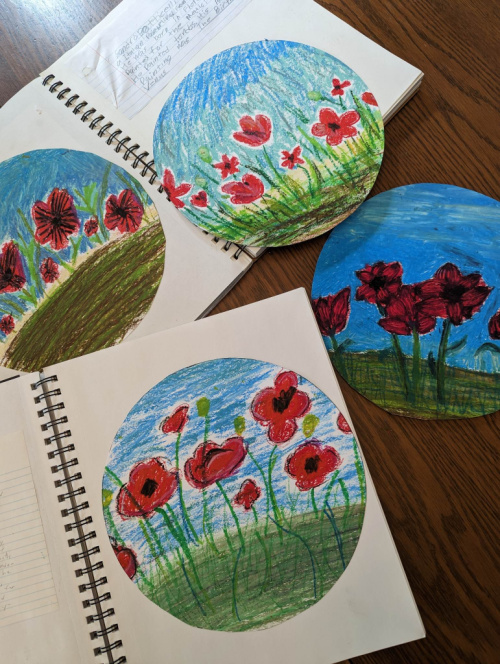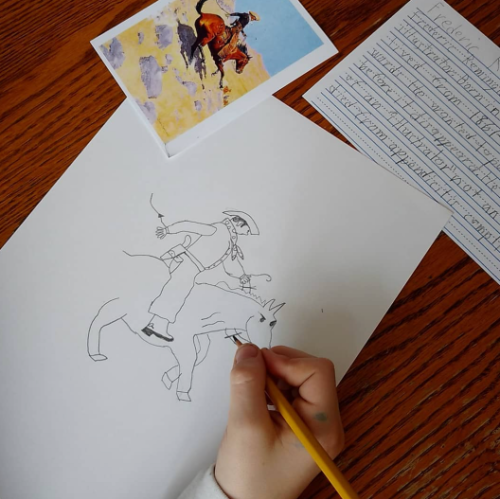In her Philosophy of Education, British education reformer Charlotte Mason wrote, “Every child should leave school with at least a couple hundred pictures by great masters hanging permanently in the halls of his imagination.” (vol. 6, p.43) Miss Mason set aside time not only for her students to express themselves artistically but also for them to study the lives, styles, and works of the great masters.
It was her belief that art colors a child's world, helps to fulfill his God-given need for beauty and creativity, connects him to people and cultures down through the ages, and supports the development of his critical thinking skills and worldview.
Several years ago, in an effort to give more careful consideration to how I approached art in my homeschool, I decided to not only carve out intentional time each week for creative expression but also to be more calculated in my attempts to teach art history.
(This post contains affiliate links. Please see my disclosure policy for full details.)Since then, we've read great books. We've used real materials. We've copied great works. We've written our thoughts about the masters in a notebook dedicated entirely to art and art history.
Below is a peek into our homeschool art time. (Please note: We never try to cram all of these steps into one lesson, but instead stretch them out over the course of 2-3 lessons. Since we only do art once a week, we usually take a couple of weeks to complete the study of one artist.)
We study the artist.
- Art with Mati and Dada (for younger kids)
- Famous Artists for Kids (for tweens)
- Famous Artists Biographies (for tweens & teens)
- Art History Lessons (art periods throughout history for tweens & teens)
We study his work.
- Famous Paintings cards
- A Child's Book of Art
- Sister Wendy's 1000 Masterpieces
- Sister Wendy's Story of Painting
We narrate what we've learned.
Once they've written a brief paragraph of biographical information, they glue this narration to one side of a two-page spread in their art notebook. (These 11x14 sketch notebooks are perfect for Charlotte Mason-style notebooking because they are large enough to hold a piece of homemade artwork without requiring the artist to do any trimming.)
"Giotto was an Italian artist who became popular for his Gothic art. From 1305 through 1306, he painted a series of Biblical frescoes at Arena Chapel. The Deposition of Christ, one of his most famous works, features Jesus who has just been taken down from the cross, his mother Mary who is holding Him, Mary Magdelene at His feet, the Apostle John looking on, Nicodemus, Joseph of Arimathea, the angels, and a crowd of others."
If I am able to print out an example of the particular work of art we discussed, I do so and instruct my kids to glue it into their notebooks above or below their written narrations.
We create a piece of art.
Our work is usually two-dimensional, created on basic art paper and glued onto the corresponding 2-page spread in our notebooks. Occasionally, we attempt sculptures and 3-dimensional pieces. These, of course, can't be glued into our notebooks but are kept on a shelf next to them.
We learn to appreciate art.
Confession: I lived in the Southwest for the first 22 years of my life and never really appreciated cowboy art. It was everywhere I turned. I didn't understand it and therefore didn't like it.
But one day while studying Frederic Remmington with my children during art time, I began to see southwestern art in a different way. I learned that Remmington was a turn-of-the-century illustrator whose life's mission was to preserve the last of the western frontier in paintings so that future generations could enjoy it. I also learned that he was and still is the most well-known western artist in history. In fact, one of his bronze sculptures, The Bronco Buster, has apparently graced the Oval Office during every presidency since the Carter administration.











Thanks, Jaime! Art has been a struggle around here. So, I ordered your Rec books and we'll plan to make the time to have art weekly.
ReplyDeleteArt is definitely a subject that is easy to avoid, especially if you have little ones who make big messes. But while I sometimes hate doing it, I'm always grateful for having done it with my kids.
DeleteDo you count this time toward a fine art credit for your older kids? Thanks!
ReplyDeleteGreat question! I listed it as a half-credit (.5) on my high schoolers' transcripts.
DeleteAwesome! We are just entering the credit world :) so I’m absorbing as many tips as I can. Thank you!
DeleteYou're most welcome!
DeleteThanks again for this. Art has been a struggle for us but after reading this I am encouraged to start again after over a year of shelving it
ReplyDeleteThank you so much for this inspirational post. I love that you incorporate art history and narration into art. Right now we are learning how to draw for art and it can be pretty dull. I'm excited to make the lessons a little more hands-on and multi-faceted, as well as more CM.
ReplyDelete